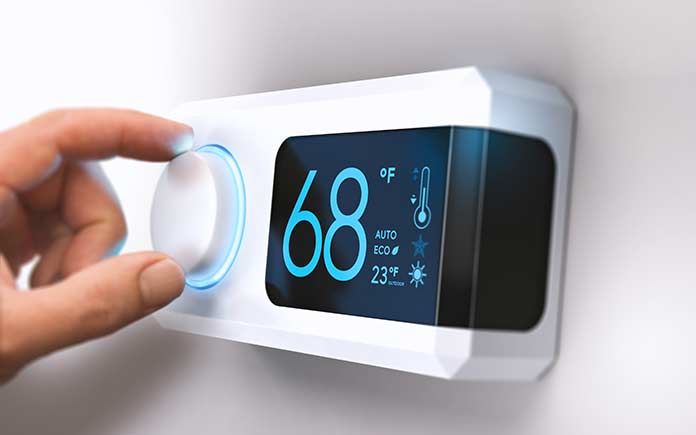Boosting a home’s energy efficiency doesn’t require much time or expense, but the results can pay dividends toward lowering utility bills and combating climate change.
The Power of Practicing Energy Efficiency
If you want to reduce your carbon footprint and protect the environment, you need to use energy sources wisely.
That’s a top priority for Public Service Enterprise Group, a Newark, New Jersey-based energy company. PSE&G believes all utilities should focus on clean energy because it benefits customers and the environment.
Best of all, the solutions are simple.
Did You Know
The average U.S. household can save 15% on heating and cooling costs by doing two things: air-sealing their home and adding insulation in the attic, floors and over crawl spaces, according to the U.S. Environmental Protection Agency.
Practicing energy efficiency — making small changes to perform a task with fewer resources — has the same environmental benefits as using renewable resources. It won’t affect your lifestyle, and you’ll still see lower utility bills, so it’s a win-win situation.
Remember: the cheapest energy is the energy you don’t use. That’s why making changes now to lower energy bills for the long haul couldn’t be more important.
Caulk: The Secret Weapon
It doesn’t matter whether your home is big or small; temperature changes are the great equalizer.
Drastic shifts in temperature cause every home to expand, contract and crack. In fact, 90 percent of homes are under-insulated, according to the U.S. Environmental Protection Agency.
A tube of caulk — applied before each season’s temperature swings — is the secret weapon against expansion and contraction.

Sealing gaps around your home’s windows, doors and trim keeps the elements — and insects — outside, where they belong.
This reduces noise levels, improves humidity control and increases overall comfort.
The Impact of Attic Insulation
Sealing the envelope of your home is important for energy efficiency, but don’t forget to reduce inefficiencies inside the home, too.
Start with the attic, which needs all the insulation it can get. How much you’ll need depends on the insulation’s R-value, which expresses the product’s effectiveness. R-value ranges from 2.0 to 8.0 per inch of insulation. Attics should have about 12 to 15 inches of fiberglass or cellulose insulation, according to the U.S. Department of Energy.
But insulation comes in all kinds of other materials, too, including mineral wool. Shop around, check the prices and benefits, and choose the option that’s right for your home.
If your attic already has insulation, place unfaced insulation — which has no paper backing — perpendicular to the floor joists.
If your attic has no insulation, place faced insulation between the joists with the paper side facing the heated living space.
Why Renewable Resources are Ideal
Everything needs energy — from our homes to our cars and all the places we go. That’s why we should choose our energy sources carefully and use them wisely.
Coal, fossil fuels and petroleum are common nonrenewable energy sources. They will run out at some point, but that’s not the only concern. They produce greenhouse gas emissions and contribute to climate change, according to scientists.

Renewable resources — such as biomass, geothermal power, hydropower, and solar and wind energy — aren’t just sustainable alternatives that will stick around; they also produce clean energy.
But renewable resources aren’t widely used. Just 11% of total U.S. energy consumption and about 17% of electricity generation came from renewables in 2019, according to the U.S. Energy Information Administration.
That means, for now, we need to make small changes to benefit our wallet and planet.
More Tips
These are just a couple of ways to boost your home’s energy efficiency. If you want more advice, check out PSE&G’s Winter Energy Tips.












